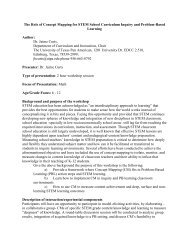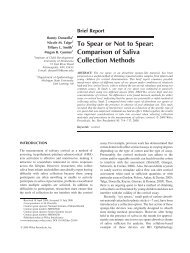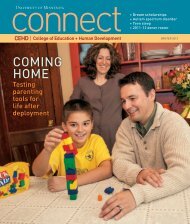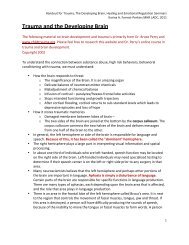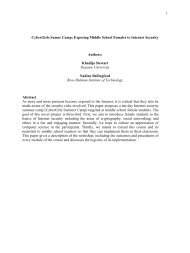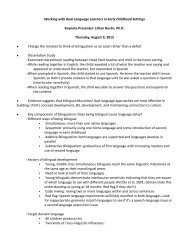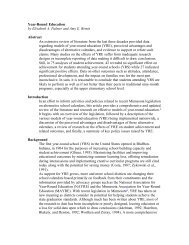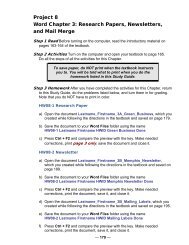Introduction to Positive Ways of Intervening with Challenging Behavior
Introduction to Positive Ways of Intervening with Challenging Behavior
Introduction to Positive Ways of Intervening with Challenging Behavior
Create successful ePaper yourself
Turn your PDF publications into a flip-book with our unique Google optimized e-Paper software.
Differential Reinforcement...<br />
a proactive intervention for the classroom<br />
This Intervention Tip Sheet has been developed <strong>to</strong> assist teachers and parents in providing the best possible<br />
educational opportunities <strong>to</strong> students <strong>with</strong> emotional and behavioral disorders. This Tip Sheet was published by<br />
the Institute on Community Integration, College <strong>of</strong> Education, University <strong>of</strong> Minnesota, Minneapolis and was<br />
authored by Kareen Smith <strong>of</strong> the Institute.<br />
<strong>Introduction</strong><br />
The importance <strong>of</strong> consequences in shaping behavior was voiced by B.F. Skinner in the early years <strong>of</strong> this<br />
century. Research since then continues <strong>to</strong> show that reinforcement is a key component <strong>of</strong> helping facilitate<br />
changes in student behavior. The method <strong>of</strong> reinforcement delivery also plays an important role in the<br />
effectiveness <strong>of</strong> the reinforcement. This tip sheet describes differential reinforcement and the different types <strong>of</strong><br />
delivery methods <strong>of</strong> reinforcement.<br />
What is differential reinforcement?<br />
There are two kinds <strong>of</strong> differential reinforcement. The first is used <strong>to</strong> decrease inappropriate behavior by ignoring<br />
it and providing reinforcement for appropriate behavior. The second is used <strong>to</strong> bring behavior under the control <strong>of</strong><br />
a specific stimulus.<br />
The word "differential" means that students are taught <strong>to</strong> differentiate between positive and negative<br />
behaviors by learning that specific behaviors will or will not be reinforced and that behaviors are appropriate only<br />
when exhibited in certain situations, i.e., after certain discriminative stimuli.<br />
How is differential reinforcement delivered?<br />
Differential reinforcement is delivered in the same way as positive reinforcement and can consist <strong>of</strong> the same<br />
types <strong>of</strong> reinforcers. What is different is when it is delivered.<br />
When is differential reinforcement delivered?<br />
It is at this point that the different types <strong>of</strong> differential reinforcement distinguish themselves. Each type <strong>of</strong><br />
differential reinforcement will be defined, an example will be given, its purpose will be explained, and schedules<br />
and cautions will be outlined.<br />
Differential Reinforcement <strong>of</strong> Other <strong>Behavior</strong>s (DRO). DRO is reinforcement delivered when the targeted<br />
inappropriate behavior is not exhibited. For example, if the targeted behavior is interrupting, the teacher will<br />
reinforce a student for not interrupting, even if other inappropriate behaviors are occurring, because these<br />
behaviors are not being targeted. DRO can be used <strong>to</strong> reinforce a student after a specific interval <strong>of</strong> time during<br />
which a targeted inappropriate behavior was not exhibited. A DRO-reset schedule is one which starts the interval<br />
over immediately after the student exhibits the targeted behavior. One may also use fixed interval schedules in<br />
which the timer is not reset until the time runs out.<br />
Three cautions when considering using DRO: "first, because reinforcement is provided as a result <strong>of</strong> the<br />
nonoccurrence <strong>of</strong> a targeted inappropriate behavior, a specific appropriate behavior is not reinforced....Second,<br />
provision <strong>of</strong> reinforcement contingent on nonoccurrence <strong>of</strong> a targeted inappropriate behavior may lead <strong>to</strong>




